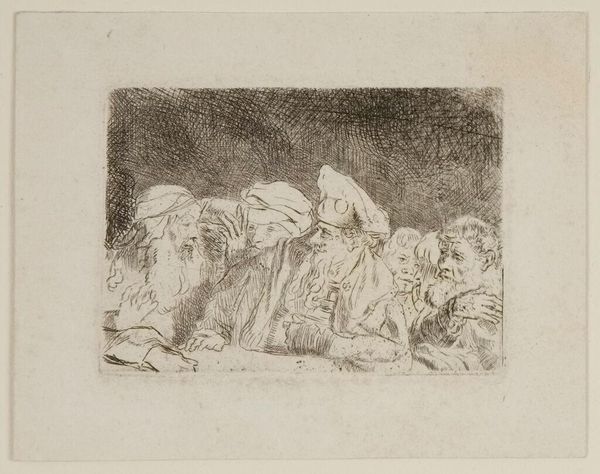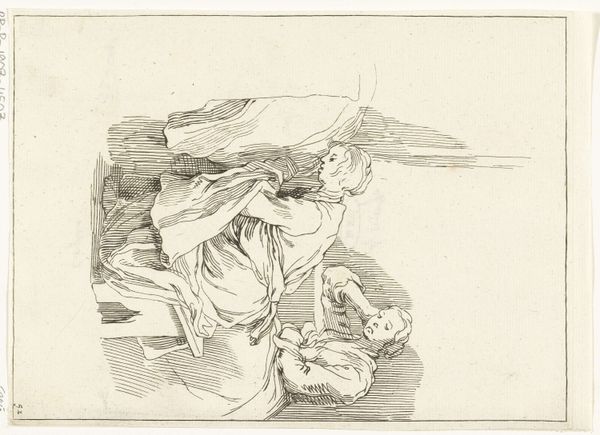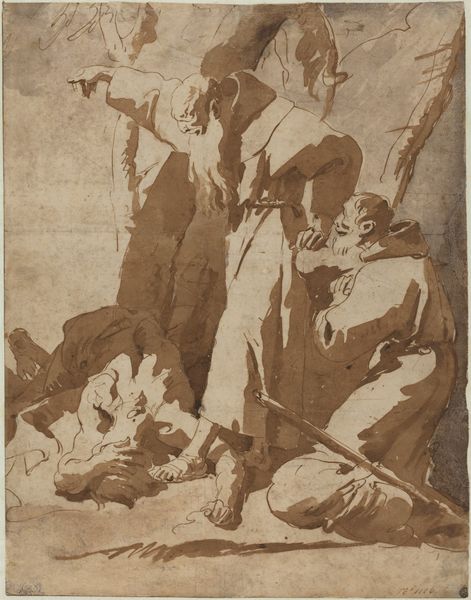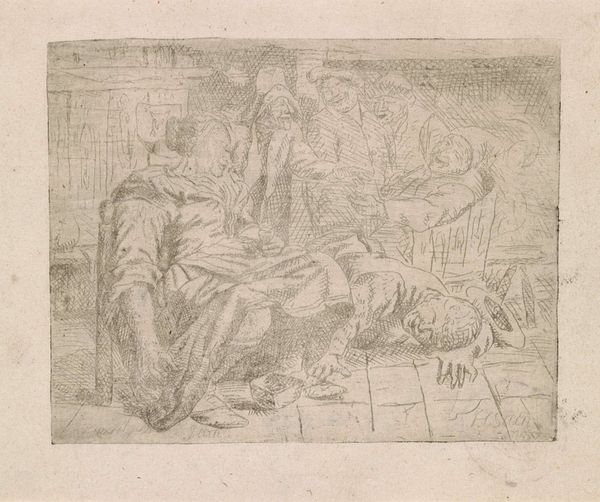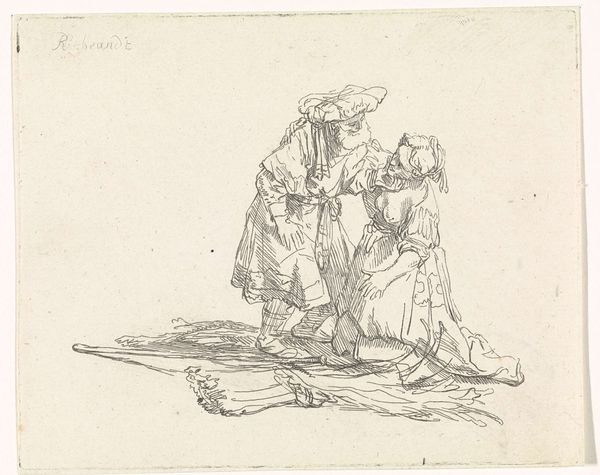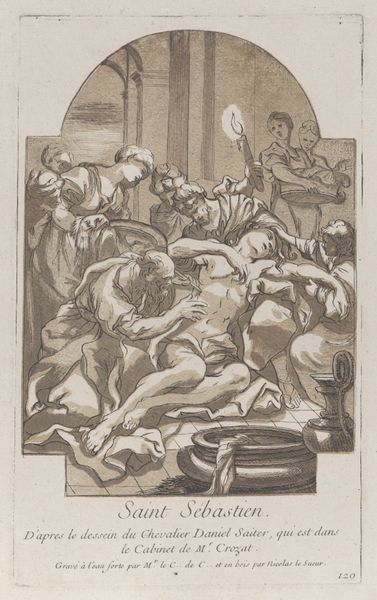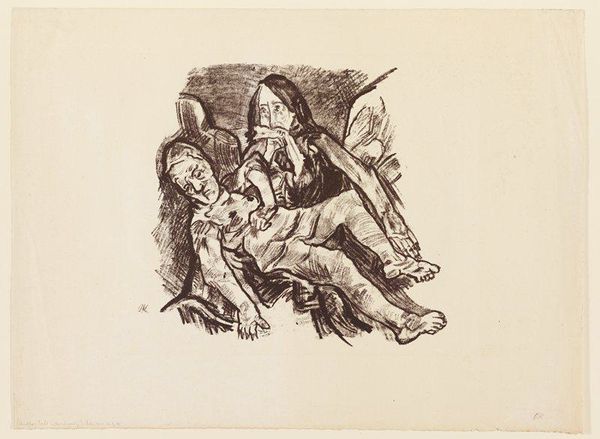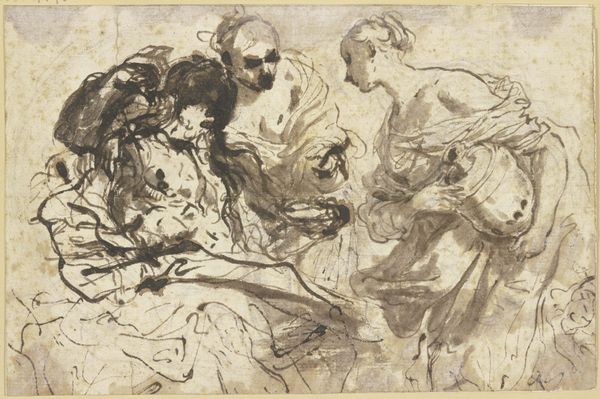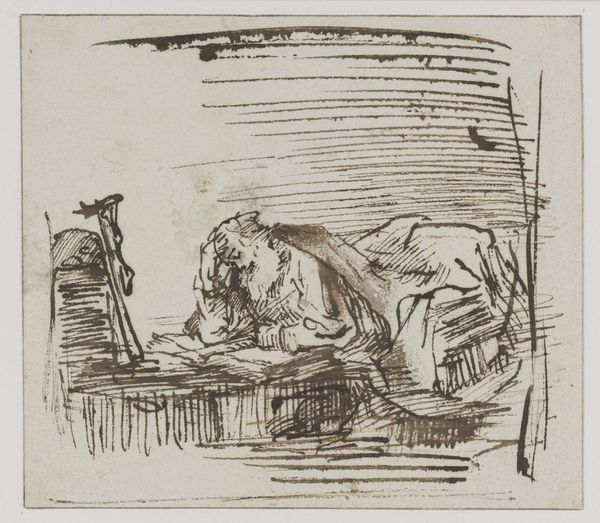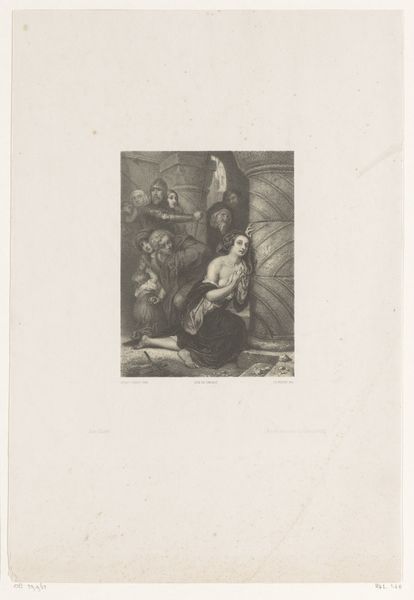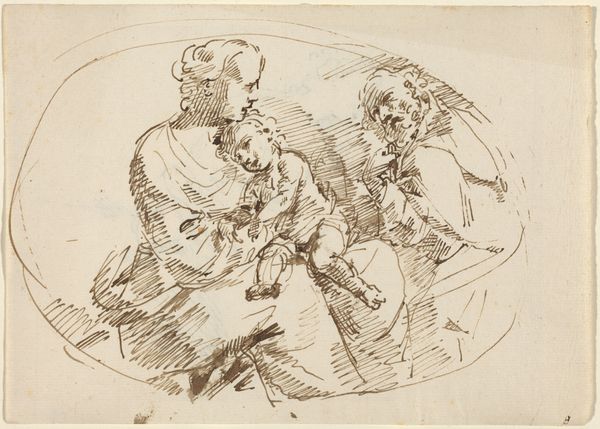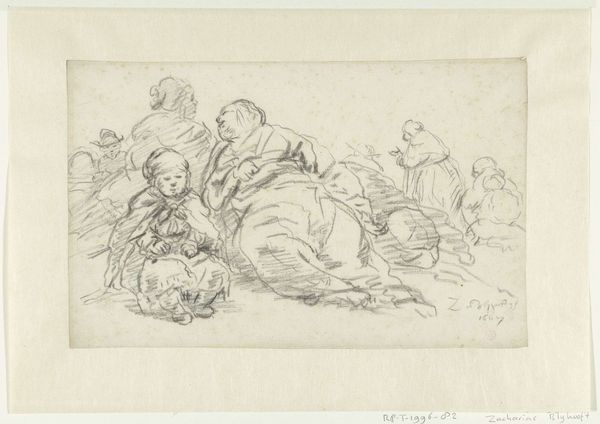
print, engraving
# print
#
group-portraits
#
romanticism
#
genre-painting
#
engraving
Dimensions: height 93 mm, width 127 mm
Copyright: Rijks Museum: Open Domain
Curator: Here we have David-Pierre Giottino Humbert de Superville’s engraving, “Mannen met een geslacht varken," which roughly translates to "Men with a slaughtered pig.” It's estimated to have been made sometime between 1781 and 1849. Editor: Woah. Intense. Immediately I'm struck by the…well, brutality of it. The stark contrast, the sharp lines of the engraving... it just screams "rough work" to me. I feel like I can smell the pig! Curator: The artwork certainly confronts us with the realities of agricultural labor. These men, likely peasants or rural workers, are shown in the act of butchering, a fundamental aspect of life for many during this period. Notice how the image renders their class through coarse, unidealized features, reflective of the socio-economic conditions prevalent at the time. Editor: Totally, it's unromanticized, and that's what gets to me. No dainty shepherdesses here, you know? And that angle, it almost feels voyeuristic. Are we supposed to feel implicated somehow, like we're complicit in the whole food chain? It also reminds me, strangely, of really physical baroque paintings, all that blood and movement! Curator: Precisely! This engraving captures both Romanticism’s and genre painting’s interests. There’s the Romantics’ focus on the everyday and emotional immediacy while adhering to conventions around genre scenes that showed ordinary life, thus placing the bodies and labor of the working class within an aesthetic framework. Editor: I can also imagine what those days were like. This single image holds layers upon layers of living in what now feels like a faraway, more direct reality. I suppose that´s one of art's magical tricks to place you inside past experiences...or to see it from a safer place far away from real guts and slaughter. Curator: Yes, this piece highlights crucial discussions around representation and agency. Who is given the power to depict, and whose perspectives are privileged or marginalized? It is these very questions that force us to critically assess how art informs and shapes our understanding of history, identity, and power relations. Editor: You're totally right. So next time I tuck into a bacon sandwich, maybe I'll spare a thought for our chums here and that, um, rather deceased pig! Curator: Indeed, perhaps such reflection fosters a more mindful approach to our food systems, and our roles within them.
Comments
No comments
Be the first to comment and join the conversation on the ultimate creative platform.
